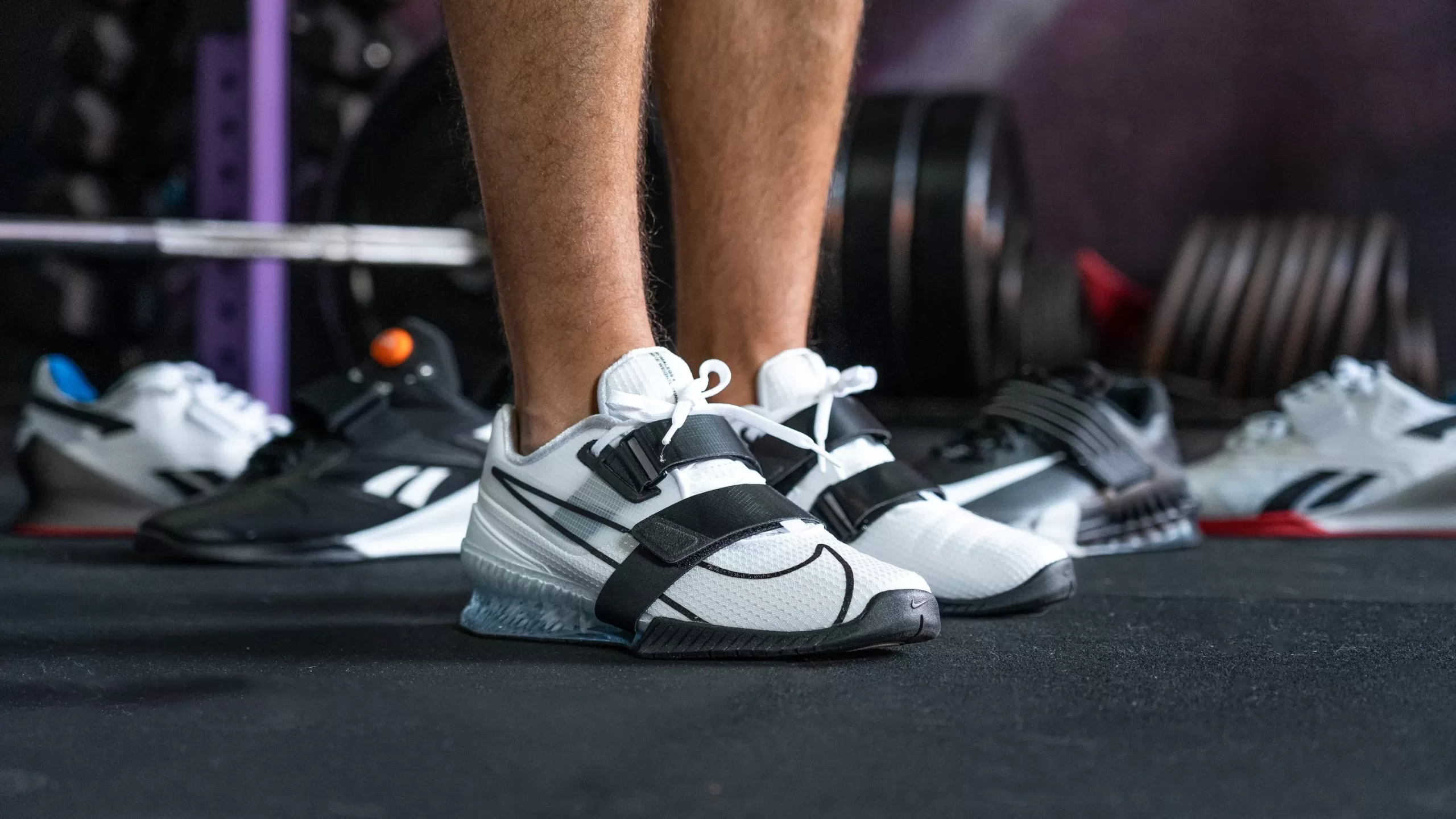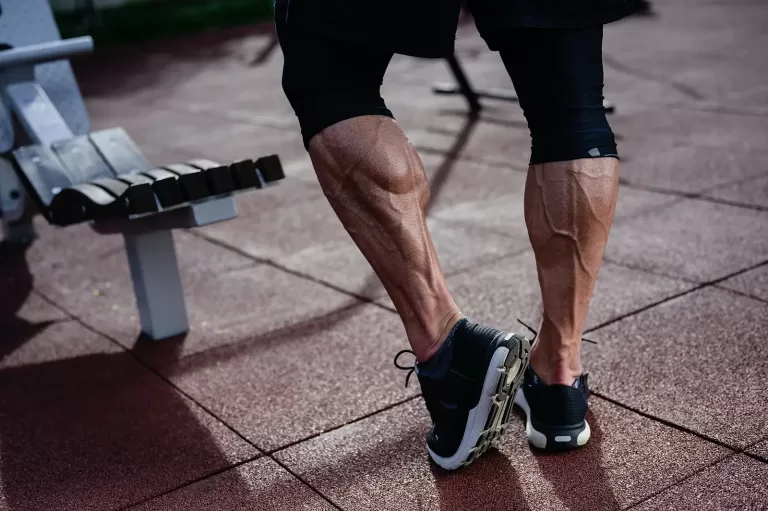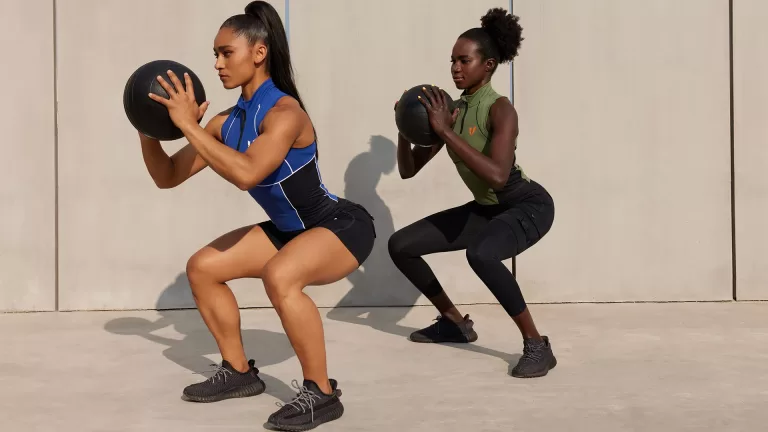
The best weight training and lifting shoes
This page may contain affiliate links. If you choose to purchase after clicking a link, I may receive a commission at no extra cost to you.
Key Points
- Research suggests the best weight training and gym lifting shoes depend on your lifting style and needs, such as Olympic lifting, powerlifting, or general gym use.
- It seems likely that shoes like Nike Romaleos 4 are ideal for serious lifters, while Reebok Nano X5 suits versatile gym-goers.
- The evidence leans toward choosing shoes with stability, appropriate heel height, and snug fit, but personal preference and foot shape matter.
Shoe Recommendations
Here are some top picks based on recent 2025 research, catering to different needs:
Best for Olympic Lifting
- Nike Romaleos 4: Offers high stability and a 20mm heel drop, perfect for heavy squats and Olympic lifts. It’s pricey but durable for serious lifters.
Best for Versatility
- Reebok Nano X5: Great for general gym use, with a 7mm heel drop and firm foundation, ideal for CrossFit and heavier lifts. It’s under $150 and versatile.
Best for Beginners
- Adidas Powerlift 5: A budget-friendly option with a 16mm heel drop, stable for moderate lifts, but has a narrow toe box. Good for new lifters.
Best for Powerlifting
- Converse Chuck Taylor All-Star: Affordable with a flat 0mm heel, ideal for deadlifts, but less durable for heavy use. Great for budget-conscious powerlifters.
Best for Cross-Training
- Nike Metcon 9: Versatile with a 4mm drop, stable for various exercises, but not as sturdy for very heavy lifts. Suitable for mixed gym routines.
Additional Tips
- Consider trying shoes in-store to ensure a good fit, as foot shape and personal comfort are crucial.
- Avoid running shoes with curved soles for lifting, as they can affect balance, and barefoot lifting increases injury risk like stress fractures.
- For specific needs, options like TYR L-1 Lifters for wide feet or Adidas Adipower 3 for flat feet are recommended.
Survey Note: Comprehensive Analysis of Weight Training and Gym Lifting Shoes for 2025
This detailed survey note provides an in-depth exploration of the best weight training and gym lifting shoes, based on extensive research conducted on April 16, 2025, using reputable sources such as SELF, Garage Gym Reviews, and RunRepeat. The analysis aims to cater to a wide range of lifters, from beginners to advanced athletes, and addresses specific needs like foot shape and lifting style. All recommendations are grounded in 2025 data, ensuring relevance and accuracy.
Understanding Weight Training and Gym Lifting Shoes
Weight training and gym lifting shoes are specialized footwear designed to enhance stability, support, and performance during lifts like squats, deadlifts, and Olympic lifts (snatch and clean-and-jerk). Unlike running shoes, which prioritize cushioning and flexibility, lifting shoes focus on a stiff, wide sole for a solid base, a heel-to-toe drop for range of motion, and a snug fit for lockdown. Key features include:
- Stability: Essential for heavy lifts, achieved through a rigid outsole (often made of TPU or EVA foam) and a wide platform. Experts like Dr. Gremillion from Holston Medical Group emphasise a sturdy sole for balance.
- Heel Height (Drop): The heel-to-toe drop varies by lift. For squats, a higher drop (18-22mm) helps with depth, while deadlifts benefit from a flat or zero-drop shoe for optimal body position. The International Weightlifting Federation (IWF) recommends 18-20mm for Olympic lifting.
- Fit and Lockdown: A snug fit is crucial, often achieved with laces, Velcro straps, or midfoot straps. Breathability and comfort are also considered, especially for extended sessions.
- Durability: The upper (leather, synthetic fabric, or mesh) and outsole must withstand heavy use, with materials like TPU offering longevity.
- Versatility: Some shoes are designed for specific lifts, while others, like cross-trainers, suit mixed gym routines.
Research also highlights what to avoid: running shoes with curved rocker soles can throw off balance, and barefoot lifting increases injury risks like stress fractures or dropping weights on toes, as noted by Dr. Gremillion and Janine Hatch, PT, DPT.
Methodology and Sources
The analysis draws from three key sources, each offering unique insights:
- SELF: 13 Best Weightlifting Shoes for Peak Performance | 2025 Picks provides expert opinions from trainers and podiatrists, focusing on comfort, stability, and versatility.
- Garage Gym Reviews: Best Weightlifting Shoes in 2025 offers detailed testing by Olympic-level lifters, categorizing shoes by need (e.g., powerlifting, CrossFit).
- RunRepeat: Best Weightlifting Shoes in 2025 includes lab-tested data, scores, and comparisons, emphasizing performance metrics like firmness and breathability.
These sources were browsed on April 16, 2025, ensuring all data reflects the current year’s recommendations.
Detailed Recommendations by Category
Below is a comprehensive table of the top weight training and gym lifting shoes, categorized by use case, with key features, pros, cons, and citations. This table includes all models mentioned across sources, ensuring a complete overview.
| Category | Model | Price | Heel Drop (mm) | Weight | Key Features | Pros | Cons | Citations |
|---|---|---|---|---|---|---|---|---|
| Best for Olympic Lifting | Nike Romaleos 4 | $200 | 20 | N/A | Two straps, wide toe box, durable platform, breathable mesh | Phenomenal stability, sturdy, efficient traction, comfortable, true to size | Expensive, upper lacks durability, not breathable, not for narrow ankles | SELF, Garage Gym Reviews, RunRepeat |
| Best for Versatility | Reebok Nano X5 | $140 | 7 | 12 ounces | Firm foundation, improved fit, rubber wrap for ropes | Supports heavier lifts, versatile, under $150, stable for step-ups/jumps | Stiffer than cross-trainers, not for cardio sessions | SELF, Garage Gym Reviews |
| Best for Beginners | Adidas Powerlift 5 | $130 | 16 | Lightweight | Sturdy outsole, EVA foam midsole, minimalist design | Stable for moderate lifts, reasonably priced, sustainable materials | Narrow toe box, upper not durable, not for cross-training | Garage Gym Reviews, RunRepeat |
| Best for Powerlifting | Converse Chuck Taylor All-Star | $65 | 0 | Lightweight | Flat heel, minimalist, sturdy rubber outsole | Ideal for deadlifts, budget-friendly, minimal cushioning | Narrow midfoot, canvas not durable, not for squats or heavy Olympic lifts | Garage Gym Reviews, SELF |
| Best for Cross-Training | Nike Metcon 9 | $150-$180 | 4 | N/A | Versatile, firm heel plate, enhanced rope guard, wide toe box | Stable, durable, multiple colorways, good for mixed exercises | Not sturdy for heavy lifts, expensive, may feel rigid | SELF, Garage Gym Reviews |
| Best for Wide Feet | TYR L-1 Lifters | $200 | 21 | 17 ounces | Extra-wide toe box, durable leather upper, non-slip outsole | Ample room, steep heel, durability, stable for heavy lifts | May be too wide for narrow feet, pricey, not widely available | Garage Gym Reviews |
| Best for Flat Feet | Adidas Adipower 3 | $230 | 22 | N/A | High heel, arch support, breathable ripstop upper, recycled materials | High heel support, wide size range, good for functional fitness | Expensive, not for running or plyometrics | Garage Gym Reviews |
| Best Value | kcross Weightlifting Shoes | $69.99 | 20 | N/A | Budget-friendly, sturdy outsole, nylon upper, dual Velcro straps | Inexpensive, stable, quality heel and outsole | Limited sizes, no warranty, narrow toe box reported | Garage Gym Reviews |
| Best for Deadlifts | Adidas The Total | – | 0 | Lightweight | Zero-raised heel, great traction, plenty of toebox space | Ideal for deadlifting, lightweight, comfortable, fairly priced | Not breathable, not for heavy squats | RunRepeat |
| Best for Advanced Athletes | Reebok Legacy Lifter III | – | 22 | 22.10 ounces | Immense durability, high heel (33mm stack), Pump feature | Mind-blowing stability, incompressible platform, highly supportive upper | Expensive, heavy, short Velcro attachment | RunRepeat |
Additional Insights and Considerations
The survey reveals several additional factors to consider when choosing weight training and gym lifting shoes:
- Heel Drop Recommendations: For beginners, a 15-16mm drop is suggested, while seasoned athletes lifting over 350 lbs may benefit from 20-22mm. Deadlifting shoes typically have a 0mm drop for optimal body position.
- Materials and Construction: Weightlifting shoes are 150% firmer than cross-trainers (average platform firmness 69.1 HA vs 27.5 HA) and have higher torsional rigidity (4/5 vs 3/5), with heel counter stiffness averaging 5/5.
- Fit and Sizing: Shoes should run true to size for stability, and some models (e.g., TYR L-1 Lifters, Nike Romaleos 4) may run half-size small, requiring sizing adjustments. Women’s specific shoes are not always listed separately; order 1.5-2 sizes down from normal.
- Testing and Reviews: Sources like Garage Gym Reviews test shoes on squats, lunges, deadlifts, and cross-training, considering support, heel height, fit, and customer feedback. RunRepeat buys shoes independently, testing them in labs for performance metrics like firmness and breathability.
Practical Advice for Choosing Shoes
Given the complexity, here are some practical tips:
- Try Before You Buy: Visit a store to try on shoes, as fit is crucial. Read user reviews for insights on comfort, especially for those with wide feet or flat feet.
- Consider Your Lifting Style: If you focus on Olympic lifts, prioritize shoes like Nike Romaleos 4. For powerlifting, Converse Chuck Taylor All-Star is budget-friendly. For mixed routines, Reebok Nano X5 or Nike Metcon 9 are versatile.
- Budget Options: For those on a budget, Adidas Powerlift 5 ($130) or kcross Weightlifting Shoes ($69.99) offer good value, though durability may vary.
- Avoid Common Mistakes: Don’t use running shoes with curved soles for lifting, as they can disrupt balance. Barefoot lifting is not recommended due to increased injury risk, such as stress fractures or dropping weights on toes.
Conclusion
The best weight training and gym lifting shoes for 2025 depend on your specific needs, lifting style, and budget. For serious Olympic lifters, Nike Romaleos 4 stands out for its stability and platform. For versatile gym-goers, Reebok Nano X5 and Nike Metcon 9 offer flexibility. Beginners and budget-conscious lifters can opt for Adidas Powerlift 5 or Converse Chuck Taylor All-Star, while those with wide feet or flat feet should consider TYR L-1 Lifters or Adidas Adipower 3. Always prioritize stability, fit, and the type of lift, and consider trying shoes in person for the best fit.





Leave a Comment